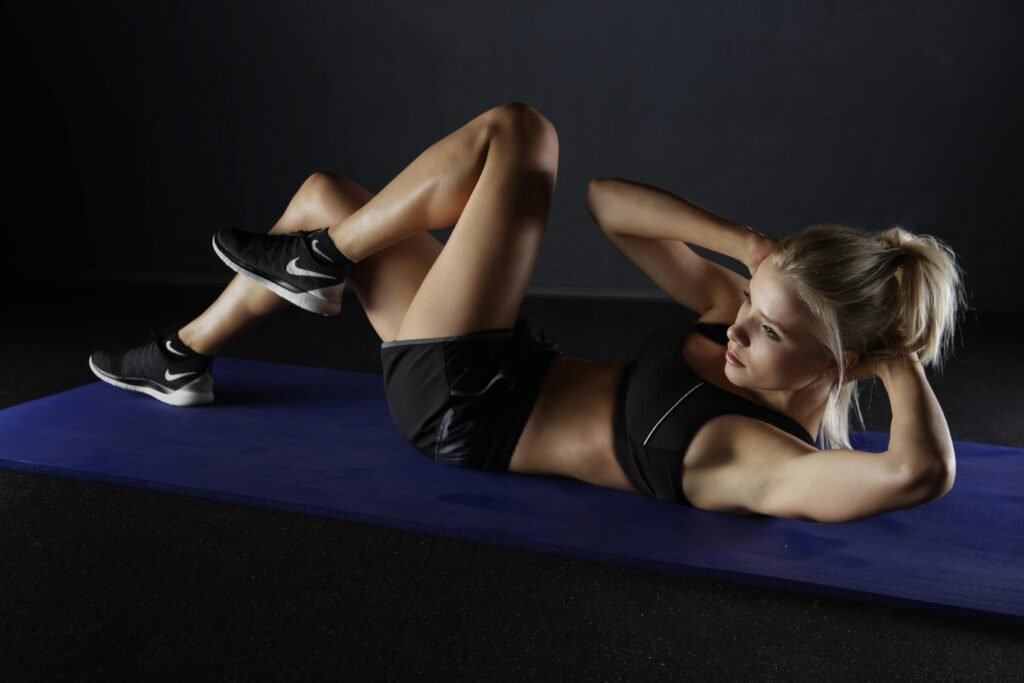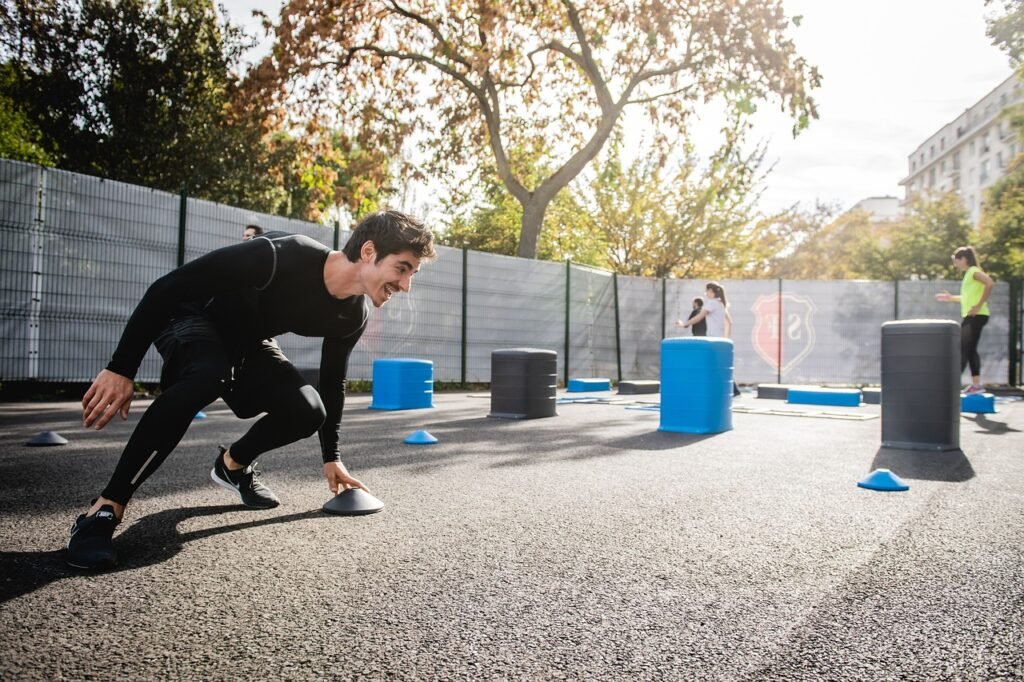
Welcome to a helpful guide on addressing common defects in used exercise equipment. Whether you’re a seasoned gym enthusiast or just starting your fitness journey, finding and repairing issues in used fitness equipment can save you time and money in the long run. From fixing wobbly treadmill belts to tightening loose weight bench screws, this article will provide you with practical tips and tricks to get your used exercise equipment in top shape for your next workout session. Say goodbye to frustrating breakdowns and hello to a more efficient and enjoyable fitness routine! Have you recently purchased used exercise equipment only to find that it has defects or issues that need to be addressed? Don’t worry, you’re not alone! In this article, we will discuss common defects found in used fitness equipment and provide you with tips and tricks on how to effectively repair them. Let’s get started!

This image is property of pixabay.com.
Identifying Common Defects in Used Exercise Equipment
Before diving into repairing your used exercise equipment, it is essential to first identify the common defects that may arise. By knowing what to look for, you can address these issues promptly and ensure that your equipment functions smoothly and safely.
Worn Out Cables and Pulleys
One of the most common defects found in used exercise equipment is worn-out cables and pulleys. Over time, the cables on machines such as treadmills, ellipticals, and weight machines can wear down due to constant use. Likewise, pulleys can become loose or misaligned, affecting the overall performance of the equipment.
If you notice fraying or kinks in the cables, or if the pulleys seem to be making strange noises or not moving smoothly, it may be time to replace them. Using equipment with damaged cables and pulleys can compromise your safety and the effectiveness of your workouts.
Rust and Corrosion
Another prevalent issue with used exercise equipment is rust and corrosion. If the equipment has been stored in a damp or humid environment, or if it has not been properly maintained, metal components can begin to rust and deteriorate. Not only does rust compromise the structural integrity of the equipment, but it can also pose a risk to your health.
Inspect the metal parts of your exercise equipment for signs of rust and corrosion. Pay particular attention to bolts, screws, and weight plates. If you notice any rust spots, use a wire brush to scrub them off and apply a rust converter to prevent further corrosion.
Malfunctioning Electronics
Many modern exercise machines come equipped with electronic components such as screens, sensors, and consoles. These electronics can be prone to malfunctions if the equipment is not properly cared for or has been exposed to moisture. Common issues include screens not displaying correctly, sensors not detecting movement, and consoles not responding to input.
If your exercise equipment has electronic components that are malfunctioning, try resetting the system by turning off the machine and unplugging it for a few minutes. If the issue persists, consult the manufacturer’s manual for troubleshooting tips. In some cases, you may need to replace the electronic components entirely.
Torn Upholstery
Weight benches, workout mats, and other exercise equipment with upholstery can be susceptible to tears and rips over time. Whether due to normal wear and tear or improper handling, torn upholstery can be unsightly and uncomfortable to use. Additionally, torn upholstery can expose padding or springs, creating a safety hazard.
If you notice any tears or rips in the upholstery of your exercise equipment, consider repairing them with upholstery patches or fabric glue. For larger tears, you may need to replace the upholstery entirely. Not only will this improve the appearance of your equipment, but it will also enhance your overall workout experience.

This image is property of pixabay.com.
Repairing Common Issues in Used Fitness Equipment
Now that you have identified the common defects in your used exercise equipment, it’s time to roll up your sleeves and start repairing them. Below are detailed guides on how to fix the issues discussed above and get your equipment in top shape.
How to Replace Worn-Out Cables and Pulleys
Replacing worn-out cables and pulleys on your exercise equipment may seem like a daunting task, but with the right tools and know-how, it can be done efficiently. Here’s a step-by-step guide on how to replace cables and pulleys on your exercise machines:
-
Identify the Problem: Examine the cables and pulleys on your exercise equipment to determine which ones are worn out or damaged.
-
Order Replacement Parts: Contact the manufacturer or a reputable fitness equipment supplier to order replacement cables and pulleys that are compatible with your machine.
-
Remove Old Cables and Pulleys: Use appropriate tools to disconnect the old cables and pulleys from your exercise equipment. Take note of how they are installed so that you can easily replace them with the new parts.
-
Install New Cables and Pulleys: Follow the manufacturer’s instructions for installing the replacement cables and pulleys. Make sure that they are properly aligned and tensioned to ensure smooth operation.
-
Test the Equipment: After installing the new cables and pulleys, test the equipment to ensure that everything is working correctly. Make any necessary adjustments before using it for your workout.
By following these steps, you can effectively replace worn-out cables and pulleys on your exercise equipment and restore its functionality.
Removing Rust and Corrosion on Exercise Equipment
Dealing with rust and corrosion on your exercise equipment can be a tedious process, but it is essential to prevent further damage and maintain the equipment’s longevity. Here’s how you can remove rust and corrosion from metal components:
-
Clean the Surface: Use a wire brush or sandpaper to scrub away the rust and corrosion from the metal surface. Be sure to wear gloves and a mask to protect yourself from inhaling rust particles.
-
Apply a Rust Converter: Once the surface is clean, apply a rust converter to prevent further corrosion. Rust converters chemically convert rust into a stable compound that can be painted over to protect the metal.
-
Prime and Paint: After applying the rust converter, prime the metal surface to prepare it for painting. Choose a high-quality metal paint that is suitable for outdoor use to protect against future rusting.
-
Regular Maintenance: To prevent rust and corrosion from recurring, regularly inspect and clean the metal components of your exercise equipment. Keep the equipment in a dry environment and apply a rust-inhibiting spray as needed.
By following these steps, you can effectively remove rust and corrosion from your exercise equipment and prevent further deterioration.
Troubleshooting Malfunctioning Electronics on Exercise Machines
When dealing with malfunctioning electronics on your exercise machines, it’s essential to approach the issue with caution to avoid causing further damage. Here’s how you can troubleshoot and repair electronic components:
-
Check Connections: Ensure that all cables, wires, and connectors are securely attached to the electronic components. Loose connections can cause issues with screens, sensors, and consoles.
-
Reset the System: Turn off the machine and unplug it for a few minutes to reset the electronic system. This can help resolve minor software glitches that may be causing the malfunction.
-
Consult the Manual: Refer to the manufacturer’s manual for troubleshooting tips specific to your exercise machine. Follow the recommended steps to diagnose and fix electronic issues.
-
Contact Customer Support: If you are unable to resolve the issue on your own, contact the manufacturer’s customer support for assistance. They may be able to provide guidance or recommend a professional technician to repair the electronics.
By following these troubleshooting steps, you can effectively address electronic malfunctions on your exercise equipment and ensure that it functions properly during your workouts.
Repairing Torn Upholstery on Exercise Equipment
Repairing torn upholstery on your exercise equipment is a straightforward process that can improve the appearance and comfort of your workouts. Here’s how you can repair torn upholstery:
-
Clean the Area: Before repairing the torn upholstery, clean the affected area with a mild detergent and water to remove any dirt and debris. Allow it to dry completely before proceeding.
-
Patch Small Tears: For small tears in the upholstery, use an upholstery patch kit to cover the damaged area. Follow the instructions provided with the kit to ensure a secure and long-lasting repair.
-
Replace Larger Tears: If the tear is too large to patch, you may need to replace the upholstery entirely. Measure the dimensions of the damaged area and order a replacement upholstery cover that fits your exercise equipment.
-
Secure the Repair: Whether patching or replacing the upholstery, make sure that the repair is securely fastened to the equipment. Use fabric glue or adhesive tape to ensure that the upholstery stays in place during use.
By following these steps, you can effectively repair torn upholstery on your exercise equipment and create a more comfortable and aesthetically pleasing workout environment.

This image is property of pixabay.com.
Conclusion
Addressing common defects in used exercise equipment is essential to ensure that your machines function smoothly and safely during your workouts. By identifying the issues, such as worn-out cables and pulleys, rust and corrosion, malfunctioning electronics, and torn upholstery, you can take the necessary steps to repair them effectively.
Whether you’re replacing cables and pulleys, removing rust and corrosion, troubleshooting electronics, or repairing torn upholstery, it’s important to approach these tasks with care and attention to detail. By following the tips and guides provided in this article, you can restore your used exercise equipment to top condition and enjoy a safe and efficient workout experience.
Remember, regular maintenance and proper care are key to keeping your exercise equipment in optimal condition. By investing time and effort into repairing and maintaining your machines, you can ensure that they provide you with years of reliable service and help you achieve your fitness goals. So, roll up your sleeves, grab your tools, and get ready to repair and revitalize your used exercise equipment!


